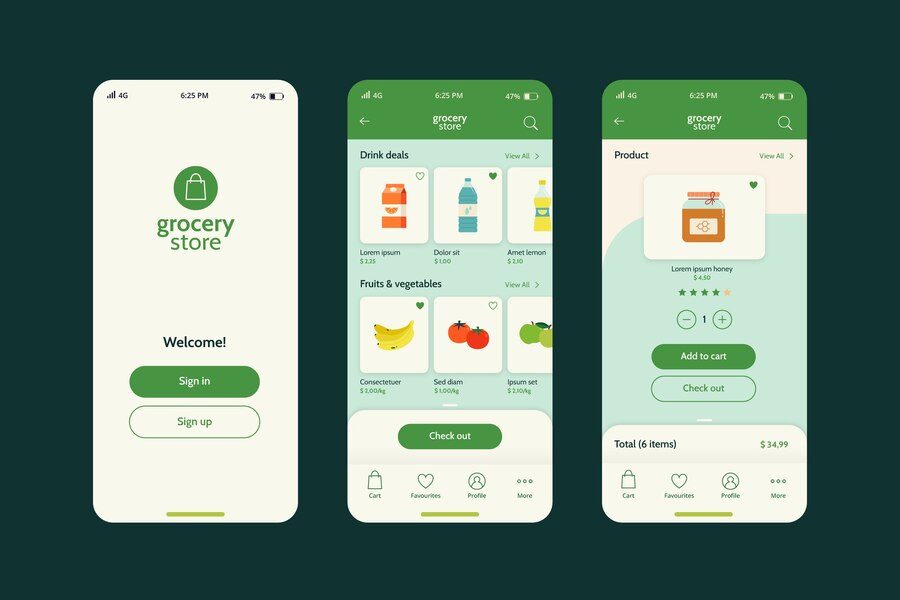Creating a seamless user experience (UX) in product apps is crucial for user engagement, retention, and overall satisfaction. By focusing on intuitive design, smooth navigation, and user-centric features, you can build apps that delight users and meet their needs. Here’s a detailed guide to help you achieve that.
1. Understand User Needs and Pain Points
Conduct thorough user research to identify what users want and the challenges they face. Use interviews, surveys, and analytics to gather valuable insights. Map out user journeys to visualize how users interact with your app and identify friction points.
2. Plan and Design Intuitive Navigation
A well-structured navigation system is essential for a seamless experience. Keep navigation simple and consistent by:
- Organizing features logically
- Using recognizable icons and labels
- Minimizing the number of steps to complete tasks
- Including a clear and visible menu
3. Optimize Performance and Speed
App performance directly impacts user experience. Slow loading times and unresponsive screens can lead to user frustration. Optimize your app by:
- Minimizing heavy images and unnecessary scripts
- Caching frequently accessed data
- Using performance monitoring tools to identify and resolve bottlenecks
4. Personalize User Experiences
Personalization makes users feel valued and engaged. Use data analytics and user preferences to offer tailored content and features. Personalization can include:
- Customized recommendations
- User-specific notifications
5. Ensure Visual and Interaction Consistency
Consistency across all screens and interactions creates a cohesive user experience. Use a unified color scheme, typography, and design components. Maintain consistency in:
- Button styles
- Animation patterns
- Font sizes and colors
6. Provide Clear and Actionable Feedback
Users need immediate feedback for their interactions. Visual cues, animations, or text confirmations can inform users that their actions have been successfully registered. Examples include:
- Success messages for form submissions
- Loading indicators during data processing
- Error messages with actionable solutions
7. Incorporate Microinteractions
Microinteractions add a layer of engagement and make the app more enjoyable. They can guide users and provide subtle feedback. Examples include:
- Button animations when tapped
- Haptic feedback on key actions
- Progress indicators during uploads
8. Implement a Smooth Onboarding Process
First impressions matter. A well-designed onboarding process helps new users quickly understand your app’s features and benefits. Keep it simple and interactive by:
- Highlighting key features
- Offering optional walkthroughs
- Providing skip options for experienced users
9. Test and Iterate Continuously
Regular testing ensures that your app remains relevant and user-friendly. Conduct usability testing with real users to identify issues and gather feedback. Use A/B testing to compare different design elements and implement improvements.
10. Prioritize Accessibility and Inclusive Design
Accessibility ensures that your app is usable by everyone, including individuals with disabilities. Follow accessibility guidelines and include features such as:
- Screen reader compatibility
- Adjustable text sizes
- Keyboard navigation
- Sufficient color contrast
11. Error Prevention and Recovery
Design your app to prevent user errors and provide clear recovery options when issues occur. Best practices include:
- Input validation to prevent incorrect entries
- Undo options for reversible actions
- Descriptive error messages with actionable solutions
12. Build Trust with Security and Privacy
Users need to feel safe when using your app. Incorporate robust security measures and communicate your commitment to privacy. Include:
- Secure login options (e.g., multi-factor authentication)
- Clear privacy policy statements
- Data encryption for sensitive information
13. Encourage User Engagement and Retention
Implement strategies to keep users coming back, such as:
- Push notifications with valuable updates
- Gamification elements (e.g., rewards for milestones)
- Community features for social engagement
Conclusion
Creating a seamless user experience in product apps requires a deep understanding of user needs, thoughtful design, and continuous optimization. By following these strategies and focusing on user-centric features, you can build apps that not only meet user expectations but also foster long-term engagement and loyalty.
Devoq Design is a leading UI/UX design agency in UI/UX Design Agency in Louisiana and UI/UX Design Agency in Maine , specializing in creating intuitive, visually stunning, and user-friendly digital experiences. With a team of expert designers, Devoq Design focuses on crafting responsive websites, mobile apps, and enterprise solutions that enhance user engagement and business growth. Whether in Louisiana’s vibrant tech scene or Maine’s emerging digital market, Devoq Design ensures cutting-edge design solutions tailored to clients’ needs. Their approach combines creativity, innovation, and data-driven insights to deliver seamless UI/UX experiences that drive results.











